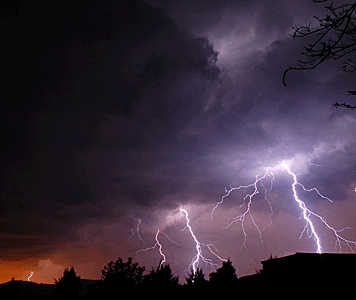Studying the Fourth State of Matter
Feb. 14, 2012
Where is the hottest place on Earth? For one brief instant it was in San Mateo, California–or to be more specific, at the Stanford Linear Accelerator Center (SLAC) at Stanford University. The staggering 3.6-million °F (2-million °C) temperature was created by scientists studying a form of plasma created in the massive heat. A plasma is a form of matter that behaves somewhat like a gas but can conduct electricity and reacts to a magnetic field. Scientists sometimes call plasmas the fourth state of matter, after solids, liquids, and gases. The scientists created the extremely intense heat by shooting a powerful beam of X rays at a piece of aluminum foil.
In the solar system, only nuclear explosions and the interior of the sun are hotter than the temperatures created in the SLAC experiment. However, the goal of the experiments was not to create the hottest temperature. Instead, the intense heat was needed to produce a form of plasma commonly called “hot dense matter.” This form of plasma is similar to the plasma that makes up the sun. Scientists believe the study of hot dense matter will help people better understand how the sun works and, possibly, how to produce the same type of matter on Earth on a much larger scale.

Lightning bolts consist of plasma. Few other forms of plasma occur naturally on Earth. © Marco Alegria, Shutterstock
The results of the experiments may help scientists trying to create a controlled fusion reaction on Earth. This reaction is the source of the sun’s enormous power. Scientists are already performing experiments to produce and control fusion. One such experiment is called the National Ignition Facility (NIF) at the Lawrence Livermore National Laboratory in Livermore, California. There, scientists are using the world’s most powerful laser to create small fusion reactions. In Europe, the ITER experiment is under construction. This is the first large-scale attempt to make a controlled fusion reactor that will produce more power than it uses. Harnessing the power of fusion would revolutionize energy production. Fusion releases tremendous amounts of energy and carries a relatively small risk of environmental pollution.
Additional World Book articles:


